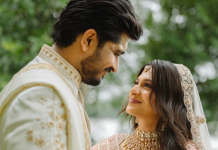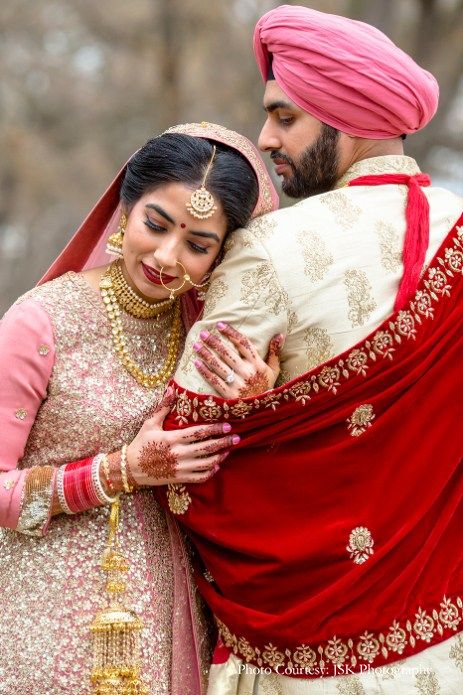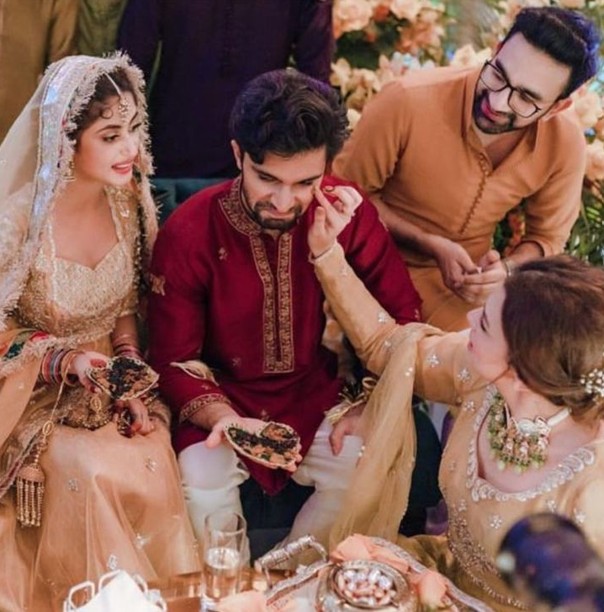How Bangladeshi Elite Families Maintain Cultural Harmony in Cross-City Marriages
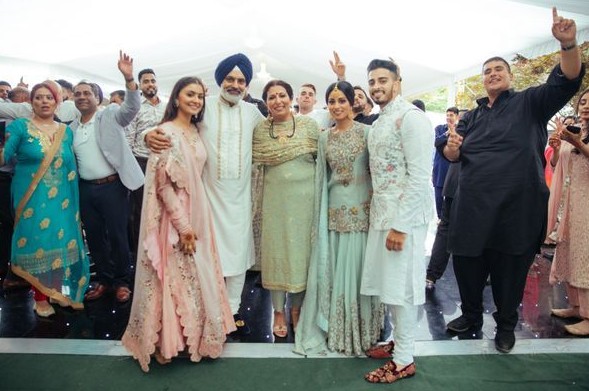
(A comprehensive guide for families, matchmakers, and couples — by Gulshan Marriage Media)
Introduction — Why Cultural Harmony Matters in Cross-City Elite Marriages
When two people decide to marry, they bring not only themselves but also their families, values, rituals, and everyday habits. In Bangladesh—where communities are tightly woven around family, faith, and regional customs—marriage is often the meeting point of multiple cultural identities. For elite families from different cities (Dhaka, Chattogram, Sylhet, Rajshahi, Barisal, Khulna and beyond), the stakes are higher: reputations, public image, social networks, and legacy are part of the equation.
Cross-city marriages among elite families are beautiful but complex. They require careful navigation to blend traditions, meet expectations, and preserve dignity. This guide explains the why and how: practical strategies, real-world examples, and a step-by-step framework to help elite families build cultural harmony before, during, and after marriage.
- Defining Cultural Harmony in the Bangladeshi Elite Context
Cultural harmony here means respectful integration of customs, rituals, and everyday practices so both families and the couple feel honored and comfortable. For elite families, cultural harmony often includes:
- Respect for religious practices and observances (Islamic rites are central for many).
- Preservation of family honor and reputation.
- Maintaining tradition without stifling the couple’s modern lifestyle.
- Harmonizing ceremonial protocols (invitation styles, seating arrangements, guest lists).
- Managing public visibility and media/social media discretion.
Harmony is not uniformity. It’s about creating a shared space where differences are acknowledged and negotiated without conflict.
- Common Cultural Tensions in Cross-City Elite Marriages
Understanding frequent pain points helps families proactively address them:
- Ceremonial Differences — Timing, sequence, and type of rituals may vary by region (e.g., wedding day customs, post-wedding hospitality).
- Lifestyle Expectations — City living in Dhaka vs. regional norms (household staff, entertainment, travel).
- Language & Manners — Dialect, formalities, and hospitality styles can be misread as rudeness or coldness.
- Public Image & Privacy — Elite families often differ in how public they are about personal life (press, social media).
- Dowry/Financial Expectations — While many modern elites avoid dowry, expectations around gifts and financial arrangements can differ.
- Elder Roles and Decision Making — The extent to which elders control decisions varies between families and regions.
- Religious/Interpretive Practices — Differences in religious observance intensity or local rituals.
- Food & Dietary Norms — Menu choices for events may conflict with local tastes or dietary restrictions.
By identifying these tension points early, families can design solutions rather than react to misunderstandings.
- Pre-Marriage: Foundation Work That Prevents Future Friction
A successful cross-city elite marriage begins long before the wedding day. Foundational steps include:
3.1. Intentional Introductions, Not Transactions
Introduce families in a setting that prioritizes values and personality over display. An intimate lunch or a private gathering with a trusted matchmaker often works better than formal, large events.
3.2. Shared Vision Meeting
Organize a guided discussion where both families (with only key members present) outline expectations about:
- Living arrangements.
- Children and education.
- Religious practice and holidays.
- Career ambitions.
- Public image and social obligations.
This “shared vision” session, ideally facilitated by a neutral professional (matchmaker, family counselor), reduces assumptions.
3.3. Transparency with Sensitivity
Elite families value privacy. Share necessary information (profession, family structure, past family issues if relevant) through verified channels. Avoid unnecessary boasting; factual, dignified disclosure builds trust.
3.4. Cultural Exchange Immersion
Before formal engagement, organize small cultural exchange moments: short visits, joint Iftars, or cultural evenings where each family showcases important traditions. Mutual exposure generates respect and curiosity.
3.5. Pre-marital Counseling for the Couple and Families
Counseling helps align expectations, teaches communication skills, and surfaces potential conflict points in a controlled environment. For elites, this is also an added layer of discretion—professional guidance that keeps matters private.
- Wedding Planning: Strategies for Harmonious Ceremonies
Weddings are high-visibility events where cultural differences can either shine or clash. Practical planning tips:
4.1. Split the Hosting Duties
When two cities are involved, conduct ceremonies in both places if feasible. Alternatively, divide major elements among families (one hosts the reception, the other the wedding rituals). This balances honor and reduces competition.
4.2. Blend, Don’t Replace
Include signature rituals from both cultures rather than replacing one with the other. For example, in addition to the main nikah, incorporate a regional welcoming ritual or a formal tea ceremony from the other side’s tradition.
4.3. Neutral Venue & Protocol
Choose venues perceived as neutral and prestigious—private clubs or private estates—especially for initial family meetings and key ceremonies. Agree on a protocol manual (dress code, seating, arrival times) to avoid awkwardness.
4.4. Formalize Roles
Designate clear roles: who will greet VIP guests, who will handle media, who will be the spokesperson for each family. Clear responsibilities prevent overlap and perceived slights.
4.5. Curate the Guest List Carefully
Elite circles have extensive networks. Prioritize close family and important social contacts to maintain intimacy. Overcrowded invitations can expose differences and cause friction.
4.6. Respectful Invitations & Communication
Send invitations reflecting both families’ styles—if one prefers formal printed invites and the other likes a concise notice, produce a combined format that honors both aesthetics.
- Food, Dress, and Aesthetics — Small Details, Big Impact
Minor details signal respect and understanding.
5.1. Menu Design
Offer a diverse menu that includes regional specialties from both families. Label dishes clearly (e.g., “Sylheti-style beef curry”) so guests understand and appreciate the variety.
5.2. Dress Code Guidance
If one family prefers traditional attire and the other modern formal wear, recommend a dress code like “Traditional or Formal” to allow graceful expression while remaining cohesive.
5.3. Décor & Music
Combine decorative elements (colors, motifs) from both cultures. Music playlists should include a mix: classical, regional folk, light contemporary—curated to move smoothly across preferences.
- Media, Public Image, and Digital Boundaries
Elite families often have media attention. Manage visibility proactively:
6.1. Press & Photographer Briefs
Set clear media rules—what can be published, what is private, and which moments are off-limits. Have a single appointed spokesperson for press interactions.
6.2. Social Media Protocols
Agree on whether engagement/wedding moments can be posted publicly. If yes, create an agreed posting schedule and hashtags. Consider professional social media managers for discretion and taste.
6.3. Maintaining Privacy
Use privacy agreements with vendors and staff. For high-profile families, NDAs for event teams can be useful to protect sensitive moments.
- Religious Practices — Aligning Faith With Flexibility
Religious observance is often central to cultural identity. Respectful approaches include:
7.1. Joint Religious Counsel
If there are questions about ceremony details, consult religious advisors acceptable to both families. A shared imam or religious figure who understands both traditions can guide inclusive rituals.
7.2. Accommodating Ritual Variations
Small adjustments—like the timing of prayers, seating for elders, or inclusion of particular duas—respectfully accommodate both sides.
7.3. Celebrating Religious Holidays Together
Joint participation in Eid prayers or Ramadan gatherings before marriage can build camaraderie and demonstrate mutual respect.
- Managing Expectations Around Dowry & Gifts
Even when dowry is not practiced, expectations around gifts and honorific gestures persist.
8.1. Make Values Explicit
Be explicit early on about a dowry-free stance or explain the form of symbolic gifts (charitable donations, modest presents) both families prefer.
8.2. Use Neutral Advisors
Let a neutral family advisor or matchmaker mediate gift policies. This prevents ego-driven exchanges.
8.3. Emphasize Thoughtfulness
Gifts that carry sentimental or charitable value (donations in the couple’s name, heritage artifacts) often matter more than expensive displays.
- Language, Manners, and Interpersonal Etiquette
Language and etiquette differences are easily misinterpreted. Tactful solutions:
9.1. Formal Introductions & Language
When dialect differences exist, use formal Bengali or a mix of Bengali and English for clarity. Encourage slower speech and polite address terms early on to avoid perceived brusqueness.
9.2. Hospitality Norms
Teach staff and coordinators to anticipate differing hospitality styles—some guests prefer formal seating, others like relaxed family mingling. A flexible program helps.
9.3. Manners & Nonverbal Cues
Body language matters. Young family members can be briefed on respectful gestures (handshakes vs. salaam, appropriate eye contact) to avoid cultural faux pas.
- The Role of Matchmakers, Counselors, and Event Professionals
Professionals are invaluable for bridging cultural gaps:
10.1. Trusted Matchmakers
Reputable matchmakers like Gulshan Marriage Media act as cultural interpreters: they verify background, facilitate introductions, and advise on protocol.
10.2. Family Counselors
Counselors help both generations voice concerns in a safe space. Counseling before and after marriage reduces friction.
10.3. Event Planners with Cultural Sensitivity
Hire planners experienced in multi-city elite weddings. They understand how to elegantly combine rituals and manage guest expectations.
- Post-Wedding Integration — Beyond the Ceremony
Cultural harmony is an ongoing project after the wedding.
11.1. Scheduled Family Visits
Plan routine visits (seasonal or annual) alternating between cities so both families feel included and appreciated.
11.2. Shared Traditions
Create new family traditions that combine elements from both sides—joint charity events, annual cultural evenings, or a hybrid festival celebration.
11.3. Parenting and Education Decisions
Decide early—ideally in pre-marriage discussions—about children’s language, schooling, and cultural exposure. Coherent planning avoids future tension.
11.4. Conflict Resolution Framework
Agree on a private protocol for resolving disputes—appointed mediators, neutral family members, or professional counselors—to avoid public or media escalation.
- Case Studies (Anonymized Examples)
Learning from real examples helps make the theory practical:
Case Study A — Dhaka + Sylhet: The Two-Night Wedding
A Dhaka-based industrial family and a Sylheti business family split events: a formal nikah in Dhaka with city dignitaries, and a Sylhet cultural evening featuring Sylheti cuisine and music. They alternated hosting duties for pre-wedding ceremonies and created a joint souvenir combining both family emblems. This approach honored both sides and reduced perceived imbalance.
Key takeaway: Splitting responsibilities and showcasing both cultures equitably confirms mutual respect.
Case Study B — Chattogram + Baridhara: The Privacy Pact
Two prominent families (Chattogram shipping magnate and Baridhara diplomat family) agreed on a strict privacy and social media pact. They engaged a single communications manager and limited guest photography. The wedding was private, yet major charitable donations were publicly announced afterwards as a shared social gesture.
Key takeaway: For highly visible elites, deliberately managed privacy can be negotiated without diminishing public goodwill.
Case Study C — Rajshahi + Gulshan: The New Tradition
A Rajshahi family emphasized rural traditions, while the Gulshan family emphasized modern aesthetics. They created a new hybrid ritual: a “heritage walk”—a short, symbolic procession inside the venue where local artisans displayed Rajshahi crafts alongside contemporary installations, visually blending both heritages.
Key takeaway: Creative fusion rituals create memorable experiences while honoring roots.
- Practical Checklists: Pre-Marriage, Wedding, Post-Marriage
Pre-Marriage Checklist
- Hold a shared vision meeting.
- Conduct a cultural exchange visit.
- Clarify living arrangements and children’s upbringing.
- Agree on financial and gift etiquette.
- Schedule pre-marital counseling.
Wedding Checklist
- Designate hosting duties and roles.
- Curate a blended menu and playlist.
- Agree on media and social media protocols.
- Ensure religious/ritual leaders are acceptable to both sides.
- Prepare a protocol manual for vendors and staff.
Post-Marriage Checklist
- Establish regular family visits schedule.
- Create shared family traditions.
- Agree on a conflict resolution protocol.
- Keep communication channels open for at least the first year.
- Plan joint philanthropic or cultural projects.
- Common Mistakes and How to Avoid Them
- Rushing decisions — give time for cultural acclimatization.
- Assuming silence equals agreement — confirm consent verbally and respectfully.
- Letting pride dominate — humility in public and private prevents resentment.
- Overexposing family affairs on social media — keep sensitive matters private.
- Ignoring elder concerns — address elders’ feelings with respect without letting them control everything.
Avoiding these mistakes preserves dignity and fosters long-term harmony.
- The Long View: Building a Shared Legacy
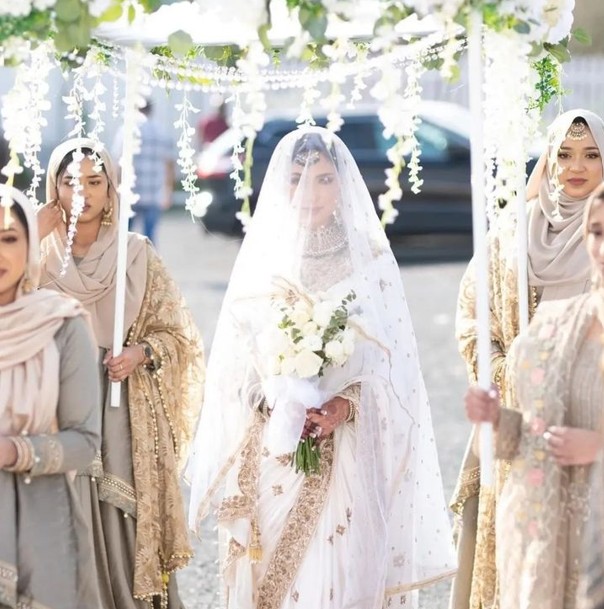
Cross-city elite marriages often aim to build a legacy—family values, philanthropy, business collaborations, and cultural patronage. Families that plan with a long view (ten years plus) create stronger cohesion:
- Joint charitable foundations or school sponsorships can bring families together.
- Cultural patronage (supporting festivals, museum exhibits) creates positive public narratives.
- Business partnerships that respect both families’ autonomy can strengthen trust when managed equitably.
A shared legacy redirects attention from short-term differences toward lasting contributions.
- Final Thoughts — Harmony as an Act of Choice
Cultural harmony in cross-city elite marriages is not accidental. It’s a deliberate practice: of listening, of honoring symbolism, of fair sharing of spotlight, and of mutual generosity. When families choose to meet each other halfway—respecting roots and embracing new forms—they create a marriage that not only blends two lives but enriches both communities.
At the heart of every successful cross-city elite marriage is humility: the willingness to prioritize relationships over prestige, to learn instead of judge, and to build traditions instead of imposing them.
How Bangladeshi Elite Families Maintain Cultural Harmony in Cross-City Marriages (Part II)
- Understanding the Sociology of Elite Marriages in Bangladesh
To understand how cultural harmony is maintained, one must first understand how elite social structures work in Bangladesh.
17.1 The Structure of Elite Society
Bangladeshi elite families typically belong to professional, political, or business circles that emphasize:
- Social reputation over individual freedom.
- Inter-family alliances that preserve wealth, influence, and legacy.
- Exclusive community networks—private clubs, embassies, old school networks, and business groups.
Thus, a marriage between two elite families is often not just emotional—it’s social diplomacy. Every gesture, every tradition, every interaction reflects not just love, but also status management.
17.2 Urban Cultural Microcosms
Each elite hub—Gulshan, Banani, Dhanmondi, Khulshi, and Sylhet’s Amberkhana—has its micro-culture:
- Dhaka (Gulshan/Banani): cosmopolitan, globally exposed, often English-educated, modern etiquette.
- Chattogram (Khulshi/Agrabad): business-oriented, hospitable, rooted in maritime commerce and community ties.
- Sylhet: diaspora-influenced elites (UK/US links), conservative yet philanthropic.
- Rajshahi/Barisal/Khulna: traditional intellectual heritage and family honor emphasis.
When two of these worlds meet in marriage, maintaining harmony means balancing cosmopolitan modernity with traditional grace—something only intentional families can achieve.
- Emotional Intelligence: The Hidden Pillar of Harmony
One of the least discussed yet most powerful tools in elite family harmony is emotional intelligence (EQ)—the ability to manage emotions and maintain grace under pressure.
18.1 Why EQ Matters More Than Money or Status
Many elite marriages fail not because of wealth gaps or power differences, but because emotional maturity is missing.
Family members who can empathize, listen, and adapt bridge cultural gaps effortlessly.
18.2 Practices That Build EQ Within Families
- Intergenerational Conversations: Elders explain traditions; youth explain modern practices.
- Cultural Sensitivity Workshops: Some elite families quietly organize private etiquette or counseling sessions before weddings.
- Mindful Communication: Encouraging politeness even during disagreements.
- Avoiding Comparisons: Instead of saying, “In our city, we do this better,” say, “That’s an interesting way—we’d love to try it.”
18.3 Case in Point
A prominent Chattogram industrialist family once faced resistance marrying into a Dhaka diplomatic family due to differences in dining etiquette and religious observance levels. With emotional intelligence, they agreed to hold a family discussion led by a counselor—turning potential friction into a bridge of understanding.
Result: the families not only reconciled differences but co-hosted future events together.
- The Role of Elite Women in Maintaining Cultural Balance
Bangladeshi elite women often play the most critical role in preserving cultural harmony, even if their leadership remains understated.
19.1 The “Cultural Diplomats” of the Family
In many families, mothers, sisters, and daughters-in-law become mediators—organizing events, managing hospitality, and preserving dignity.
Their communication, attire, and etiquette reflect the family’s openness and respect for the other side.
19.2 Women’s Education and Global Exposure
Educated elite women (many graduates of BRAC, NSU, or foreign universities) often bring refined cross-cultural skills. They understand global etiquette, making them effective cultural negotiators.
For example:
- Mixing languages gracefully in social events.
- Choosing menu or décor that honors both sides.
- Guiding household staff on etiquette.
19.3 Silent Influence, Lasting Impact
Even when men lead formal discussions, elite women often shape the underlying tone. Their ability to blend compassion with confidence sets the emotional temperature of the relationship between families.
- The Impact of Diaspora Influence on Cultural Harmony
Many elite families today have members living abroad—in London, New York, Toronto, or Dubai. Their exposure influences cross-city marriages in several ways.
20.1 International Values Meet Local Traditions
Global exposure brings liberal ideas about equality, privacy, and individuality. When diaspora-influenced families marry traditional local elites, friction can arise over:
- Dress codes
- Wedding size
- Religious rituals
- Media exposure
20.2 How Successful Families Balance This
- Allowing modern practices within Islamic or traditional boundaries.
- Focusing on shared core values—respect, education, philanthropy—rather than rituals.
- Using neutral spaces like private clubs, embassies, or destination weddings to balance cultures.
20.3 Diaspora’s Positive Contribution
Diaspora families also contribute:
- Financial stability and generosity in planning events.
- Global etiquette that reduces local ego conflicts.
- Cross-cultural tolerance learned abroad, applied locally.
Thus, globalization, when managed wisely, enriches Bangladeshi elite marriages rather than diluting them.
- Rituals as Bridges, Not Boundaries
Rituals, often viewed as potential sources of conflict, can become powerful unifiers.
21.1 Hybrid Rituals
Combining symbolic acts from both families creates a sense of inclusion:
- A combined “dua mahfil” and “family dinner” instead of separate events.
- Introducing regional cuisines from both families’ hometowns.
- Including both Islamic formalities and local folk blessings (e.g., reciting verses and traditional songs).
21.2 Storytelling Through Ceremonies
Elite families now curate events that tell a story of unity—through décor, photography, or family videos highlighting both cities’ heritages.
21.3 The Message of Balance
When guests see that both families’ symbols are equally represented, it subtly conveys equality, which prevents gossip or misunderstanding within elite circles.
- The Economics of Harmony — Managing Financial Sensitivities
Money is power, and in elite contexts, it can either unite or divide.
22.1 Transparency Without Showing Off
One side might have global assets; the other, traditional family lands. Instead of comparing, families should discuss finances functionally:
- Who will host which events?
- How will wedding costs be shared?
- What gifts are symbolic vs. necessary?
22.2 Avoiding “Prestige Competition”
Elite families sometimes unconsciously compete through venues, outfits, or guest lists. Setting a modest tone (within reason) helps maintain balance and dignity.
22.3 Philanthropy as a Neutral Ground
Instead of lavish excess, many families now donate part of wedding budgets to charitable causes—a graceful way to avoid awkward comparisons and earn respect across both cities.
- The Importance of Family Narratives
Every elite family has its narrative—a story of how it built its reputation, wealth, or legacy. When two such stories meet, they can either clash or enrich each other.
23.1 Preserving Identity While Merging Values
Encourage storytelling between generations. Grandparents can share family histories while young members can present their vision for the future. This exchange builds empathy.
23.2 Creating a New Shared Narrative
After the wedding, the couple can create their own “joint legacy story”:
How they met, what values they represent, and how they want to shape their children’s future.
This shared story cements the new cultural bond.
- Technology’s Role in Managing Distance and Harmony
Cross-city relationships often mean physical distance. Digital communication becomes a cultural bridge.
24.1 Regular Video Meets
Families use private Zoom dinners or WhatsApp calls to maintain connection before and after marriage—especially if travel between cities is infrequent.
24.2 Shared Digital Albums & Invitations
Modern elite families design online invitations and shared photo albums—a fusion of sophistication and connectivity.
24.3 Avoiding Digital Miscommunication
While useful, digital communication can mislead tone. Families should prefer voice or video over text when discussing emotional matters.
- Post-Marriage Adaptation — The True Test of Harmony
Once the wedding is over, real life begins. The couple’s success in maintaining cross-city balance defines the long-term family relationship.
25.1 Adapting to In-Laws’ City
Newlyweds often move between two cities. Spending equal time and showing genuine interest in both families’ communities prevents resentment.
25.2 Managing Household Staff and Lifestyle
Elite homes differ vastly in management. Training domestic staff to adapt to both families’ expectations is a subtle yet vital step.
25.3 Raising Culturally Balanced Children
Parents must consciously expose children to both heritages—language, dialect, food, and festivals—so they grow up proud of dual roots.
- Maintaining Long-Distance Harmony Between Families
When the couple lives in Dhaka but one family is in Chattogram or Sylhet, maintaining engagement requires deliberate effort.
26.1 Scheduled Visits
Quarterly visits during Eid or winter vacations show commitment.
26.2 Joint Family Projects
Invest in joint ventures—schools, charities, or foundations—to keep emotional and professional ties alive.
26.3 The Power of Gifting
Thoughtful gifts, like regional specialties sent during holidays, maintain affection even across cities.
- The Role of Faith and Shared Spiritual Values
Islam, being the unifying faith among most elite Bangladeshi families, plays a crucial role in preserving harmony.
27.1 Islam as the Common Ground
When traditions clash, families can return to Quranic principles—justice, compassion, modesty—to resolve disputes.
27.2 Joint Acts of Worship
Praying together or attending religious events as one family fosters spiritual unity.
27.3 Charity and Zakat as Shared Duty
Elite families often use joint charitable events during Ramadan as opportunities for bonding—where faith replaces formality.
- The Subtle Art of Respectful Comparison
In elite circles, comparisons are inevitable—but the way they are expressed defines harmony.
28.1 Appreciation Over Competition
Instead of saying, “Our city’s weddings are more elegant,” say, “We loved how your city emphasizes hospitality.”
Language shapes perception.
28.2 Mutual Learning
Invite members from both cities to teach each other small customs—traditional recipes, greetings, or crafts.
28.3 Celebrating Diversity
Turn differences into stories rather than arguments. A sense of humor and curiosity helps.
- Cultural Harmony as a Long-Term Family Strategy
Families that consciously maintain harmony enjoy broader social benefits:
- Greater reputation for grace and civility.
- Wider professional and political connections.
- Children who grow up as confident cultural ambassadors.
29.1 A Symbol of Modern Nobility
In modern Bangladesh, true elite status is no longer just about wealth—it’s about how gracefully families handle diversity.
29.2 Harmony as Legacy
When families show that two heritages can unite without friction, they inspire others in their social circles.
- Why Gulshan Marriage Media Matters in This Process
In this evolving landscape, Gulshan Marriage Media plays an essential role in connecting, advising, and guiding elite families who seek meaningful alliances with cultural balance.
30.1 Trusted Mediation
The agency discreetly introduces compatible families, ensuring that both sides share values, lifestyle standards, and social background.
30.2 Cultural Profiling
Through confidential profiling, Gulshan Marriage Media assesses not just education or wealth—but cultural mindset, etiquette, and worldview—so harmony begins from the first meeting.
30.3 Continuous Guidance
The team offers pre-marital consultation, etiquette advice, and post-marriage counseling support to help families manage differences.
30.4 Commitment to Privacy
With an emphasis on confidentiality and class, the agency ensures elite families maintain their reputation while finding compatible matches across cities.
- Vision for the Future: Modern Bangladesh, Harmonious Marriages
As Bangladesh urbanizes and mobility increases, cross-city elite marriages will only grow.
The future of family prestige will depend not on isolation, but integration — the ability to harmonize regional, linguistic, and lifestyle differences under one sophisticated roof.
Cultural harmony is not merely an achievement; it’s a philosophy of living — one that blends legacy with modernity, and personal happiness with family pride.
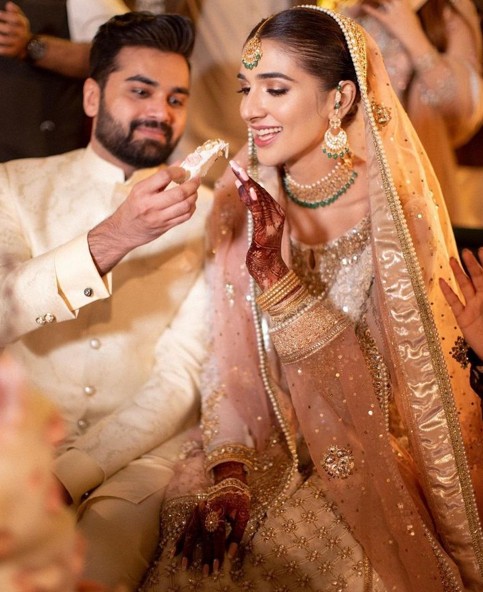
Conclusion — When Two Worlds Become One
In the world of Bangladeshi elites, where pride, privacy, and prestige intertwine, successful marriages are those that master the art of balance.
True harmony is not about abandoning one’s traditions; it’s about celebrating both. It’s in the shared laughter over different dialects, the respectful nod to varying prayer times, the blending of foods, and the decision to prioritize unity over ego.
When two elite families—one from Gulshan, another from Khulshi or Sylhet—choose to meet halfway, they don’t just create a marriage.
They create a cultural bridge that strengthens Bangladesh’s social fabric itself.
And that, ultimately, is the greatest legacy of all.


